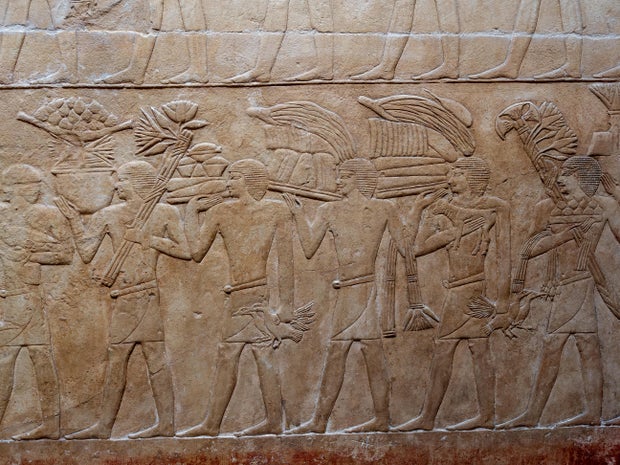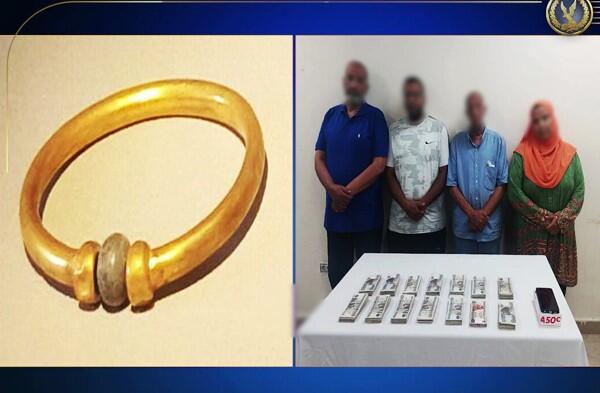Cairo — A rare 4,000-year-old limestone relief has vanished from a tomb in Egypt’s famous Saqqara Necropolis, officials say, in the second major apparent theft of an antiquity in just weeks.
The ancient artwork’s disappearance was reported over the weekend, just more than three weeks after officials confirmed that a golden bracelet stolen from the Egyptian Museum by a restoration worker had been sold on and then melted down.
The rare limestone relief vanished from a Fifth Dynasty tomb, dating to between 2500 and 2350 B.C., in the Saqqara Necropolis, south of Cairo, Egypt’s Ministry of Tourism and Antiquities said in a statement posted online Sunday.
The tomb belonged to a high-ranking official named Khenti Ka, who held titles including “Priest of the Goddess Maat” and “Overseer of the Royal Palace,” archaeologist Ali Abu Deshish told CBS News.
“The tomb is distinguished by its remarkable reliefs portraying scenes of daily life in ancient Egypt,” Abu Deshish said.
Marcelino Pozo/marcelinopozo/Getty
Calling the theft “a catastrophe by all standards,” he said Egypt’s antiquities “are not for sale. They belong to the heritage of all humanity.”
The roughly 16 x 24-inch relief that is now missing depicts the three ancient Egyptian seasons: Akhet (inundation), Peret (growth), and Shemu (harvest).
Local media reported that the artifact appeared to have been cut out of the wall of the tomb with an electric saw.
The ministry said the tomb had been completely sealed and was used as a storage space for antiquities since its discovery in the 1950s, and it had not been opened since 2019.
Upon discovering the relief missing, an archaeological committee was formed to inventory all of the tomb’s contents. After confirming media reports of the disappearance, the ministry said “all necessary legal measures have been taken and the entire matter has been referred to the Public Prosecution for investigation.”
The incident comes just weeks before the scheduled opening ceremony of the new Grand Egyptian Museum, a sprawling, 5.2-million-square-foot facility near the ancient pyramids of Giza that has taken years and more than $1 billion to bring to fruition. It is intended to be a new cornerstone of Egypt’s antiquities-focused tourism industry.
It also comes just weeks after officials confirmed that the roughly 3,000-year-old golden bracelet believed to have been worn by a pharaoh had disappeared from the Egyptian Museum in Cairo.
Egyptian Ministry of Interior
Authorities discovered that it was stolen by a museum restoration worker, sold for less than $4,000 and then melted down and lost forever.
Unlike in the case of the bracelet, experts believe whoever stole the limestone relief may have known the real value of the artifact.
“It is not merely a decorative artifact but one that carries profound symbolic meaning related to the cycle of life, agriculture, and fertility in ancient Egyptian belief, which suggests that whoever stole it understood its true value and scholarly significance,” Abu Deshish told CBS News.





